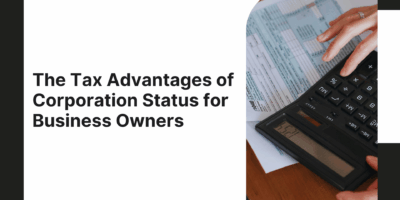
Benefits Trends Reshaping the Mid-Market
Rising costs, leaner budgets, and changing expectations – how mid-market employers are shaping benefits in real-time.

Many companies offer different pension plans, with 401(k) and 403(b) being the most common ones. They are very similar, but the main difference is that for-profit organizations offer 401(k) plans, and nonprofit organizations offer 403(b) plans.
They are so similar that sometimes the 403(b) is framed as the nonprofit 401(k) for nonprofit organizations.

A 401(k) is a retirement savings plan that allows you to contribute a predetermined percentage from your salary before paying taxes, lowering the employee’s taxable income for the year. The employer may also get involved and match part or all of the employee’s contributions.
However, that income will be taxed when the holders begin to take funds from their 401(k) after 59 and a half. That is why the 401(k) is referred to as a tax-deferred account.
The structure of 403(b) plans and 401(k) plans is almost identical.
However, 403(b) plans are offered exclusively to workers of tax-exempt organizations. This plan is frequently utilized by government personnel, medical professionals, librarians, self-employed clergy, and public school employees such as teachers and administrators.

According to the IRS, a 403(b) plan, also known as a tax-sheltered annuity (TSA), can only be offered by public schools and some tax-exempt organizations.
These organizations may represent causes like religion, education, philanthropy, science, literacy, and preventing cruelty to children or animals.
A qualified 403(b) organization is generally organized as a company, fund, community chest, or foundation. This excludes individual partnerships or for-profit corporations.
Here are some examples of 403(b) eligible organizations:
Employers have more flexibility with the 401(k) plan. Big for-profit US corporations mainly use this retirement plan.
Charitable and nonprofitable organizations are also qualified to provide a 401(k) and a 403(b)-retirement plan; however, this is rare.
To summarize, practically any company may provide a 401(k) plan.

The main takeaway between 401(k) and 403(b) is the kind of company that sponsors the plans—401(k) plans are accessible from private, for-profit enterprises. In contrast, 403(b) plans are exclusively available from nonprofit organizations and government employers.
Another significant difference between 403(b) and 401(k) plans is the investment possibilities each can provide.
Notably, 403(b) plans are exempt from many of the rules contained in the Employee Retirement Income Security Act (ERISA), which controls eligible, tax-deferred retirement assets such as 401(k)s and 403(b)s.
For example, the 403(b) plan is immune to annual nondiscrimination tests.
The testing helps prevent management-level or, in other words, “highly compensated” personnel from earning a disproportionate number of benefits under a specific plan. The basis for this and other exclusions is a long-standing Department of Labor regulation that states that 403(b) plans are not officially classified as employer-sponsored if contributions are not funded by the employer.
On the other hand, employers who make contributions to employee 403(b) accounts are subject to the same ERISA restrictions and reporting obligations as those that provide 401(k) plans.
To be included in a 403(b) plan, investment funds must also qualify as a registered investment business under the 1940 Securities and Exchange Act. This does not apply to 401(k) investment plans.
Although in 403(b) plans, employers are legally permitted to pay matches to their participants’ contributions, most firms are unwilling to offer matches to maintain their ERISA exemption.
As a result, 401(k) plans provide match schemes at a much more significant percentage.
However, if an employee has worked for a charity or government agency for more than 15 years, they may be entitled to make additional catch-up payments to their 403(b) plans that those with 401(k) plans cannot.
Another distinction between 401(k) and 403(b) plans is that non-ERISA 403(b) plans can have substantially lower expense ratios due to less rigorous reporting requirements.
Typically, the plan providers and administrators change depending on the plan. Furthermore, mutual fund firms often manage 401(k) plans, whereas insurance companies typically manage 403(b) plans.
When the employer provides both options, which is rare, it is essential to know that the IRS doesn’t allow mergers or transfers of assets between these two funds. Therefore, by choosing one, the employee must know what works best for them and be dedicated to the selected plan.
The 401(k) funds are usually more expensive for the company, thus offering a more comprehensive range and a better-quality investment option. They provide mutual funds, annuities, stocks, and bonds, whereas 403(b) plans offer only mutual funds and annuities.
403(b)s, on the other hand, have more detailed compliance testing requirements than 401(k)s. However, these are sometimes provider-dependent.
Governmental, non-ERISA (Employee Retirement Income Security Act) enterprises would profit significantly from a 403(b) over a 401(k). For example, they could quadruple their deferrals, contribute $38,000 pre-tax, and so on.
However, if not a government institution, it is most likely an ERISA plan, making a 403(b) even more akin to a 401(k).

Employers considering offering a retirement plan for their employees are faced with multiple choices. Specifically, tax-exempt, nonprofit organizations can choose between providing a nonprofit 403(b), a nonprofit 401(k), or both.
Nearly eight out of ten millionaires built their wealth primarily through their workplace retirement plans, so these plans can be a good selling point in recruiting. Moreover, they can help prevent low retention and high turnover.
By regularly investing in growth stock mutual funds, a person’s funds can significantly grow and collect money from compound interest.
Disclosure: The information provided in this post is for general informational purposes only and should not be considered as legal, tax, accounting, or investment advice. For advice on specific issues, please consult with a qualified professional.
Browse our curated list of vendors to find the best solution for your needs.
Subscribe to our newsletter for the latest trends, expert tips, and workplace insights!

Rising costs, leaner budgets, and changing expectations – how mid-market employers are shaping benefits in real-time.

As freelance work reshapes the global workforce, the pressure is on companies to get ahead of regulatory changes, not just keep up. Can freelance management systems address these compliance challenges?

What if your biggest tax lever isn’t a deduction but your legal structure?

Discover the growing trend of consumers utilizing BNPL services to pay for purchases.
Used by most of the top employee benefits consultants in the US, Shortlister is where you can find, research and select HR and benefits vendors for your clients.
Shortlister helps you reach your ideal prospects. Claim your free account to control your message and receive employer, consultant and health plan leads.